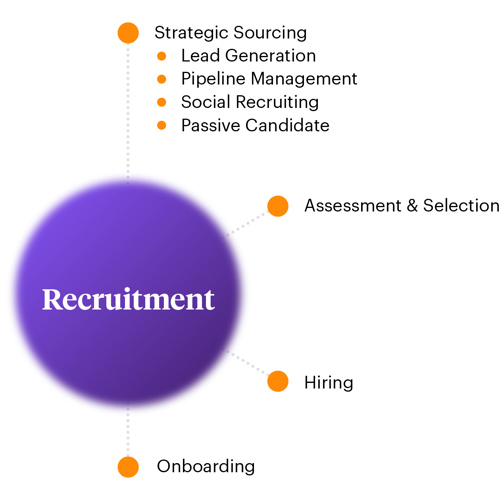Can you explain the difference between talent acquisition and recruitment? It may be clear to some, but many people still use them interchangeably.
Here’s how Bersin by Deloitte defines talent acquisition vs. recruitment:
Talent acquisition
A strategic approach to identifying, attracting, and onboarding talent to efficiently and effectively meet dynamic business needs.
Recruitment
The tactical component of attracting and identifying job candidates.
The difference comes down to connecting talent pipelines to business needs versus just addressing a momentary need. But not only is this confusing, it also shows why there's little consensus on what it would take to transform TA from being a reactive and transactional function to the strategic business partner it should be.
Simply renaming your HR department's recruitment function “talent acquisition” without any change in strategy, tactics and results, is just semantics. Truly differentiating between the two is the first step to building a coherent and proactive strategy that equips companies for a brighter future.
What is talent acquisition?
The talent acquisition model:
- Takes a long-term, big picture view
- Identifies future business needs
- Builds talent pools for the future
It's a component of talent management and includes other strategic elements. Each has its own subset of elements and activities as shown in the diagram.
When done right and aligned to business strategy, this model leads to improved performance, growth and competitive advantage.
Very few organizations have a true talent acquisition engine in place. This is true of multinationals where practices vary from country to country, and at smaller regional organizations that aren't yet aligned to global best practices. The key difficulties are twofold: a lack of understanding of all the elements of talent acquisition and the inability to implement it. This is further compounded by resistance to change.
What is recruitment?
The recruitment model:
- Is a subset of talent acquisition
- Involves finding and hiring
- Is often a knee-jerk response to resignation or vacancy
- Typically fills roles based on a rigid set of skills and competencies

Some organizations have in-house capability and rely on job boards and active incoming applicants, but many rely on contingency search firms to meet their needs. This results in organizations failing to reach passive candidates, leading to inconsistent quality of hire and an ever-rising time to fill.
The sooner organizations move from a reactive recruitment-centric approach to a proactive talent acquisition strategy, the better. By doing so, they’ll be more agile and competitive players in the marketplace.
Transforming your talent acquisition team
Transforming talent acquisition is essential for organizations to meet their business objectives. They need the top talent, in the right role, at the right time to innovate, grow, launch new products, or simply compete and survive.
The first step is recognizing that employer brands need to go beyond recruiting and implement a talent acquisition engine. That's only possible if organizations understand what talent acquisition is and how it differs from recruitment in the hiring process. The next step is understanding the elements of talent acquisition and having the advisory capability to build the engine in-house to attract qualified candidates (potential candidates who’re an ideal fit for your company).
When we discuss Recruitment Process Outsourcing (RPO), it's more accurate to describe it as Talent Acquisition Process Outsourcing. In this case, all facets of meeting your organization’s talent needs are covered. Hey, we didn’t name the industry, we just lead it.







